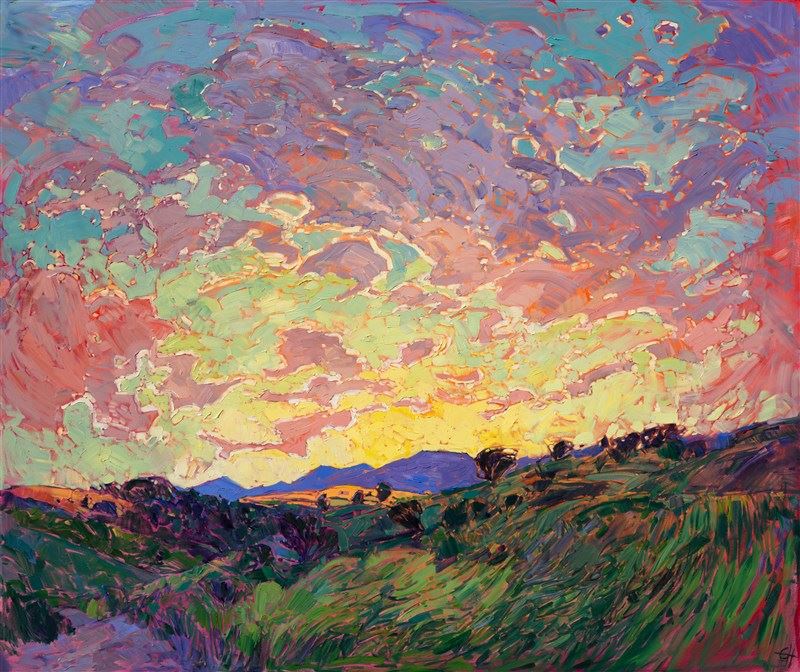Subtotal
$0
U.S. Shipping
FREE
Saved for Later
Shopping Cart
Subtotal
$0
U.S. Shipping
FREE
Saved for Later
 One of the hallmarks of an impressionist painting is the expressive use of texture in the artwork. Impasto has been used effectively by impressionist painters since the birth of the art form.
One of the hallmarks of an impressionist painting is the expressive use of texture in the artwork. Impasto has been used effectively by impressionist painters since the birth of the art form.
The term impasto is an Italian word meaning “dough, paste, or kneading.” The etymology is indicative of the technique used in impressionism. With impasto painting technique, the artist applies paint thickly to the canvas, causing that brush stroke to stand out from the rest of the composition. You can see this style in action by viewing paintings by past masters such as van Gogh and Hofmann and by contemporary artists such as Erin Hanson. The result is a deeply textured painting that is vibrant in color and intensity.
In addition to making a single brush stroke stand out, impasto techniques can also be used to combine and soften colors. The artist applies paint to a canvas already covered in still-wet paint to intertwine color and allow harsh edges to fade into other aspects of the landscape. This mix of colors and thickly applied paint creates movement within the painting, allowing the artist to highlight aspects of a piece which would ordinarily feel flat and unchanging.
Erin Hanson uses impasto in her impressionist landscapes to allow the viewer to feel as if he were accompanying the artist, hiking alongside her through a constantly changing landscape. Nature is ever-shifting: clouds pass overhead, casting moving shadows across the terrain, the wind blows and rustles through the plantlife, and sunlight becomes warmer and more saturated as the day progresses. Impasto is one of the techniques that allows Hanson to depict this changing aspect of the scenery.
Because impressionism captures the heart of a subject and gives the viewer an impression of it, the technique by which the paint is applied is essential. A composition can feel flat and unmoving or vibrant and full of life based solely on the amount of texture the artist has applied. A rhythm is created by juxtaposing areas of flattened paint with areas of raised texture. This texture is also one of the ways an original painting differs from a print: as light moves across an original oil painting, the viewer sees aspects of the painting shift and change in the light.
If you haven’t seen Erin Hanson’s technique firsthand, be sure to visit her gallery or head to one of the many exhibitions she participates in.
Discover the artist at the forefront of modern impressionism.

About Erin
ERIN HANSON has been painting in oils since she was 8 years old. As a teenager, she apprenticed at a mural studio where she worked on 40-foot-long paintings while selling art commissions on the side. After being told it was too hard to make a living as an artist, she got her degree in Bioengineering from UC Berkeley. Afterward, Erin became a rock climber at Red Rock Canyon, Nevada. Inspired by the colorful scenery she was climbing, she decided to return to her love of painting and create one new painting every week.
She has stuck to that decision, becoming one of the most prolific artists in history, with over 3,000 oil paintings sold to eager collectors. Erin Hanson’s style is known as "Open Impressionism" and is taught in art schools worldwide. With millions of followers, Hanson has become an iconic, driving force in the rebirth of impressionism, inspiring thousands of other artists to pick up the brush.